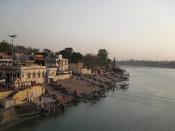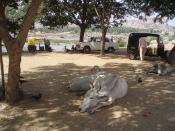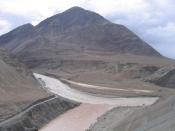Geographic factors have influenced historical developments and historical events of nations and regions. To name a few, both the Indian and Chinese cultures left behind a great amount of historical artifacts. They are two very successful countries with growing populations. They are the world?s top two over populated countries. Since these countries are over populated, the food hardly varies. Both countries undergo a two-season monsoon. One, which is very wet and cold and the other were it is very dry and unbearably hot.
India?s early civilizations mostly started around river valleys, such as the Indus River. The rivers were a great source of water and provided rich soil for agriculture. India?s Monsoon, which is considered either hot, dry miserable weather for half the year; or a downpour causing flooding, occurred yearly. The great rains would cause rivers (i.e. the Indus River) to flood, which is great for rice plants.
One very important food item for India is Rice. When the waters receded the soil was rich for farmland. However, the hot, dry monsoon is known to turn the moist soil into a dry clay-like material and crack. India trades for needed things, because the climate is too harsh to grow little more the rice and some other things. India?s population is so big that one of their main foods is rice. Today, India?s monsoons still have a dramatic effect on its cultures.
The Chinese, who mainly started their civilization around the Yellow River valley, have a vast majority of people. Although, most of China went through a dramatic Monsoon each year, the mountains remained snowy. In this climate mulberry leaves flourished. The Chinese found that silk worms fed on the leaves of mulberry plants. Later, the Chinese found the cocoon of the silk worm made a beautiful soft...


